Scientific name Euphorbia helioscopia Rank Species | Genus Euphorbia Higher classification Spurges | |
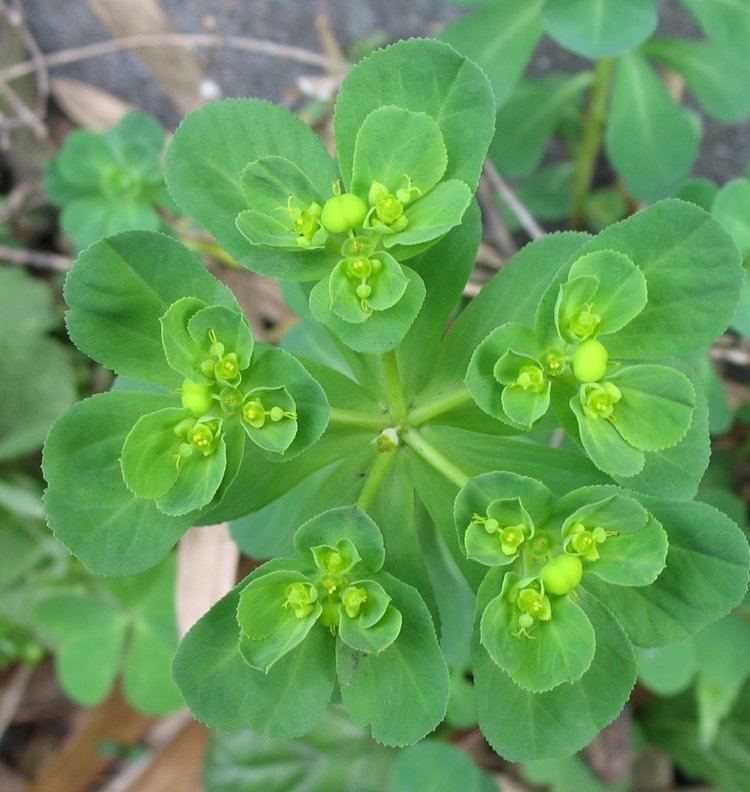 | ||
Similar Spurges, Euphorbiaceae, Euphorbia peplus, Euphorbia cyparissias, Anagallis arvensis | ||
Sun spurge euphorbia helioscopia 2012 06 13
Euphorbia helioscopia (sun spurge) is a species of spurge native to most of Europe, northern Africa, and eastward through most of Asia.
Contents
- Sun spurge euphorbia helioscopia 2012 06 13
- Kroontjeskruid euphorbia helioscopia 2016 12 30
- Description
- Uses
- Chemistry
- References
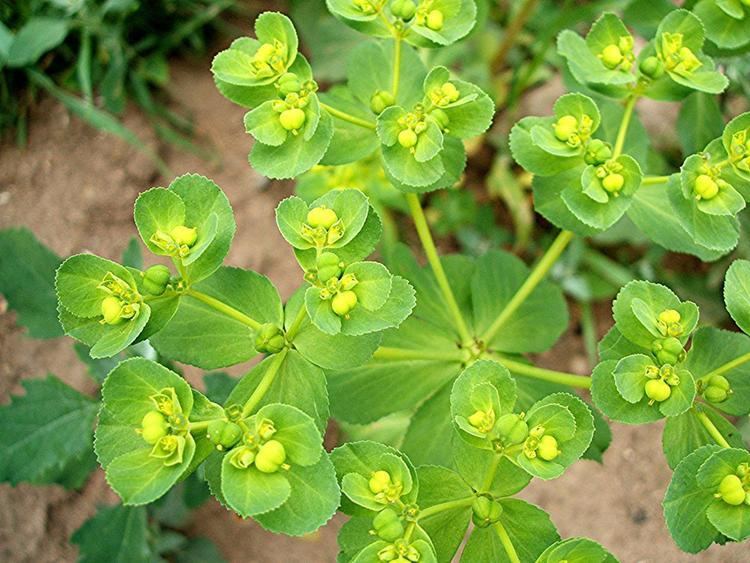
Other old folk names include wart spurge, umbrella milkweed and "madwoman's milk".
Kroontjeskruid euphorbia helioscopia 2016 12 30
Description
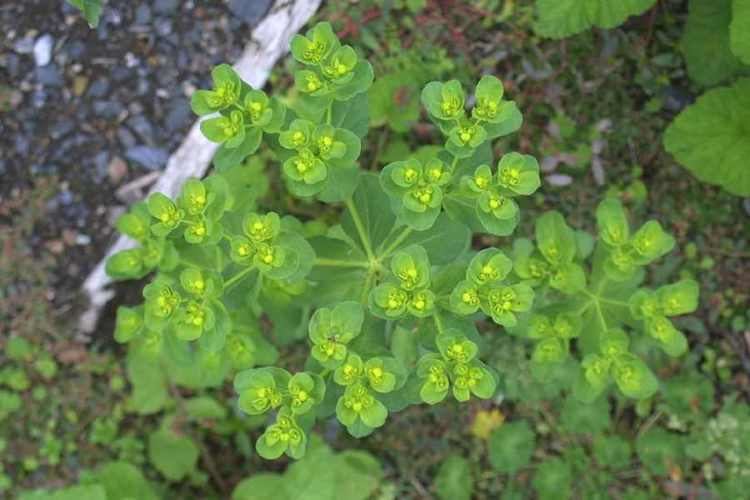
It is an annual plant growing in arable land and disturbed ground. It grows to 10–50 cm tall, with a single, erect, hairless stem, branching toward the top. The leaves are oval, broadest near the tip, 1.5–3 cm long, with a finely toothed margin. The flowers are small, yellow-green, with two to five basal bracts similar to the leaves but yellower; flowering lasts from mid spring to late summer.
Uses
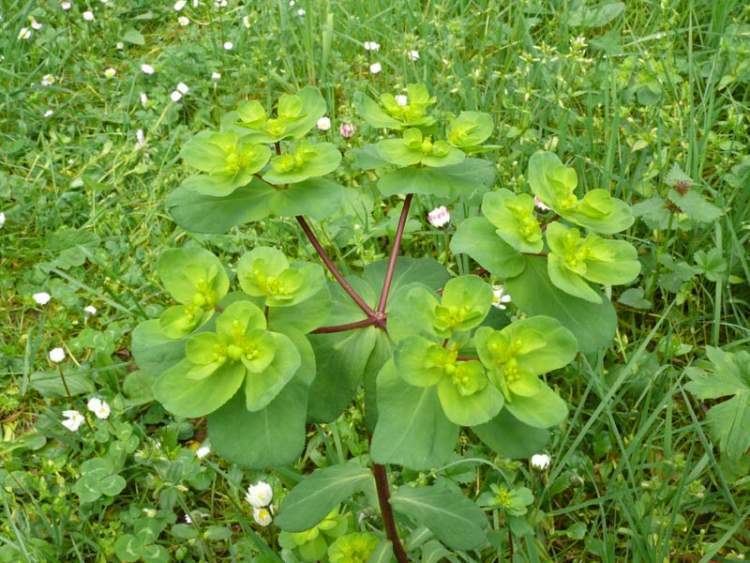
It is highly poisonous. Active ingredients are extracted from it for use in pharmaceutical industry. It is also a plant used in the Chinese traditional medicine. Its extract has been found to be an inhibitor in vivo of hepatocellular carcinoma in mice and in vitro in humans.
Chemistry
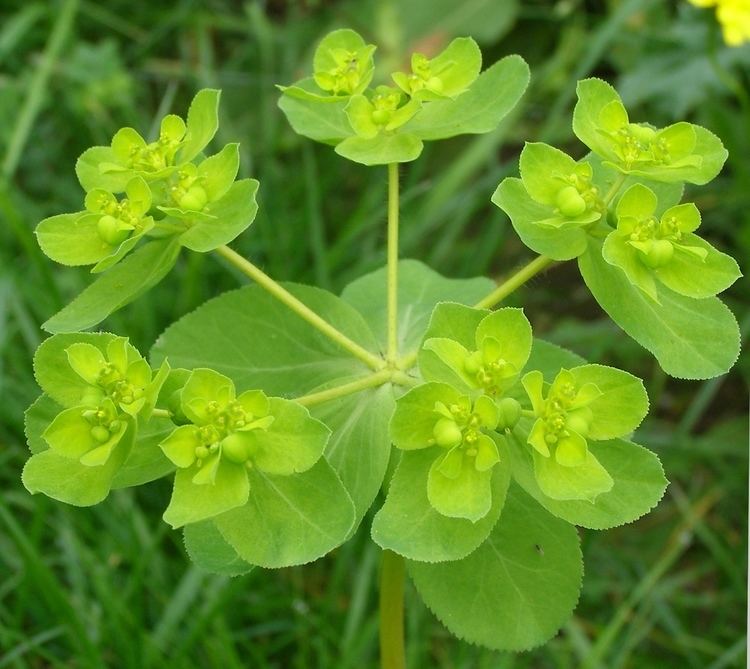
E. helioscopia contains the jatrophone-type diterpenoids euphoheliosnoid A, B, C and D and other toxic diterpenes such as euphoscopins, epieuphoscopins euphornins, cuphohelioscopins and euphohelionone.
Four esters of 12-deoxyphorbol (12-Deoxyphorbol-13-phenylacetale-20-acetate, 12-deoxyphorbol-13-dodec-dienoate-20-acetate, 12-deoxyphorbol-13-[2-methyl-cis-2-butenoate].-20-acetate and 12-deoxyphorbol-13-[2-methyl-cis-2-butenoate]) can be isolated from the fresh aerial parts. These substances are the major skin irritants found in the plant.
m-Hydroxyphenylglycine and 3,5-dihydroxyphenylglycine are two amino acids that can be isolated from the latex of E. helioscopia.
Hydrolysable tannins can be found in E. helioscopia. Helioscopinin A (1,6-(S)-hexahydroxydiphenoyl-2,4-(S)-dehydrohexahydroxydiphenoyl-3-O-galloyl-β-D-glucose), helioscopinin B (1,6-(S)-hexahydroxydiphenoyl-3-O-galloyl-β-D-glucose), helioscopin A (1,6-(S)-hexahydroxydiphenoyl-2,4-(R)-elaeocarpusinoyl-3-O-galloyl-β-D-glucose) and helioscopin B (1,3,6-tri-O-galloyl-2,4-(R)-elaeocarpusinoyl-β-D-glucose) can be found together with the 8 other tannins corilagin, punicafolin, geraniin, elaeocarpusin, furosin, terchebin, mallotusinin and carpinusin. Helioscopinin-A shows anti-allergic and anti-asthmatic activities in guinea pigs. It is suggested that this compound exerts its activities through antagonism on leukotriene D4-induced responses.
